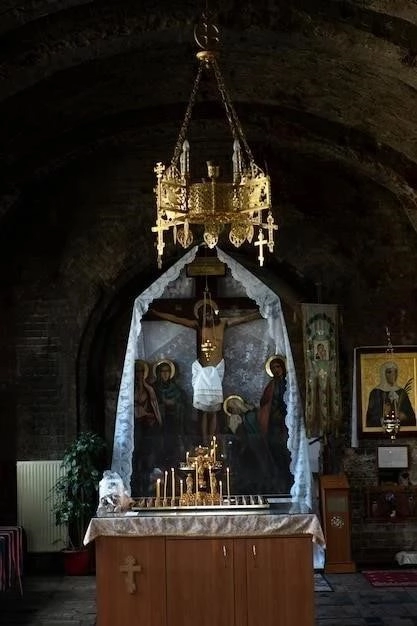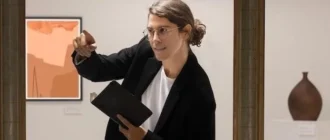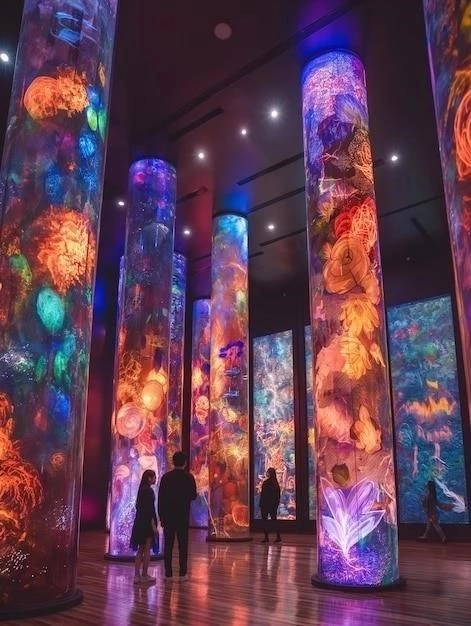The Significance of the Site
The National September 11 Memorial & Museum stands on the hallowed grounds of the World Trade Center complex in New York City. This location, forever etched in history, serves as a poignant reminder of the tragic events of September 11, 2001, and the enduring spirit of resilience that rose from the ashes.
Architectural Design and Symbolism
The architectural design of the 9/11 Memorial & Museum is both powerful and poignant, a testament to the profound loss and enduring hope that define the site. The memorial’s most striking features are the two reflecting pools, “Reflecting Absence,” which stand in the footprints of the Twin Towers. Designed by architect Michael Arad, these vast voids, each nearly an acre in size, feature the largest man-made waterfalls in North America. The water cascades down the granite walls, disappearing into a smaller, square void at the center, symbolizing the vast emptiness left by the tragedy.
Inscribed on bronze parapets surrounding the pools are the names of the 2,977 people killed in the September 11 attacks and the six victims of the 1993 World Trade Center bombing. The arrangement of the names, a design element known as “Meaningful Adjacencies,” reflects relationships that existed in life – colleagues working together, passengers on the same flight, first responders who served side-by-side. This powerful arrangement transcends alphabetical order, offering a deeply personal and moving experience for visitors.
The museum itself is located below ground, accessed through a pavilion designed by Snøhetta. The pavilion’s dramatic entrance, marked by a stark juxtaposition of light and shadow, leads visitors down into the remnants of the World Trade Center complex. The subterranean museum houses a vast collection of artifacts, photographs, and personal stories, preserving the memory of the attacks and honoring those who lost their lives.
Memorialization: Remembering the Victims
At the heart of the 9/11 Memorial & Museum lies a profound commitment to memorializing the victims of the September 11th attacks. The memorial itself, with its solemn waterfalls cascading into reflecting pools, creates a space for quiet contemplation and remembrance. The names of all 2,977 victims, etched in bronze parapets surrounding the pools, serve as a poignant reminder of the individual lives lost.
Within the museum, the “In Memoriam” exhibition offers a deeply moving tribute to the victims. This space features a collection of photographs and personal artifacts, bringing to life the stories of individuals from all walks of life who perished that day. Visitors can listen to audio recordings of loved ones sharing memories, read biographical sketches, and connect with the human toll of the tragedy on a deeply personal level.
The museum’s commitment to remembering the victims extends beyond the physical space. Its website features a comprehensive database where visitors can search for individual profiles, learn about their lives, and share their own memories and condolences. This digital platform ensures that the stories of those lost on 9/11 will continue to be told and remembered by future generations. The 9/11 Memorial & Museum stands as a powerful testament to the enduring power of remembrance and the importance of honoring the lives lost in the face of unimaginable tragedy.
Museum Exhibits: Artifacts and Narratives
The 9/11 Memorial & Museum serves as a repository of history, presenting a comprehensive account of the events of September 11, 2001, through a vast collection of artifacts and narratives. The museum’s exhibits guide visitors through the events of that day, from the moments leading up to the attacks to the aftermath and ongoing consequences.
Among the museum’s most impactful displays are the monumental artifacts recovered from the World Trade Center site. Twisted steel beams, remnants of fire trucks, and personal belongings recovered from the rubble offer tangible evidence of the devastation. These artifacts are presented alongside personal accounts from first responders, survivors, and family members, creating a multi-layered narrative that is both deeply moving and informative.
The museum also explores the historical context of the attacks, examining the rise of Al-Qaeda and the events that led to 9/11. Multimedia presentations, photographs, and documents provide visitors with a comprehensive understanding of the events leading up to that fateful day. By weaving together personal stories with historical analysis, the 9/11 Memorial & Museum offers a powerful and unforgettable exploration of one of the most pivotal events in modern history.
Artistic Representations of Loss and Resilience
Beyond the historical artifacts and narratives, the 9/11 Memorial & Museum provides a space for artistic expressions that grapple with the profound themes of loss, resilience, and remembrance. These artistic representations, encompassing a range of mediums and styles, offer poignant reflections on the human impact of the tragedy and the enduring power of the human spirit.
One notable example is Spencer Finch’s “Trying to Remember the Color of the Sky on September 11th,” a vast installation composed of 2,983 individual squares of paper, each a different shade of blue. This work, inspired by the artist’s own struggle to recall the clear blue sky of that fateful morning, serves as a poignant metaphor for the fragmented memories and collective grief that followed the attacks.
The museum also houses a collection of works donated by artists from around the world in response to 9/11. These pieces, ranging from paintings and sculptures to photography and mixed media installations, offer diverse perspectives on the tragedy, highlighting themes of grief, empathy, hope, and the indomitable spirit of those directly affected by the events of that day. Through the power of artistic expression, the 9/11 Memorial & Museum provides a space for reflection, healing, and the enduring search for meaning in the face of loss.
Commemorative Events and Public Engagement
The 9/11 Memorial & Museum serves as a focal point for commemorative events and public engagement, ensuring that the memory of September 11th is honored and carried forward by future generations. Each year, the museum hosts a series of events designed to remember the victims, honor the heroes, and reflect on the enduring legacy of that day.
The most significant of these events is the annual commemoration ceremony held on September 11th. This solemn ceremony, attended by families of the victims, survivors, first responders, and dignitaries, features a reading of the names of all those who were lost in the attacks. The museum also hosts educational programs, lectures, and exhibitions throughout the year that explore various aspects of 9/11, its historical context, and its ongoing impact.
Furthermore, the 9/11 Memorial & Museum actively engages with the public through online platforms, offering resources for educators, students, and individuals seeking to learn more about the events of September 11th. By fostering dialogue, reflection, and remembrance, the museum plays a vital role in preserving the memory of the tragedy and promoting understanding in its wake.
The 9/11 Memorial Glade: Honoring First Responders
Within the solemn expanse of the 9/11 Memorial & Museum, a dedicated space known as the 9/11 Memorial Glade stands as a poignant tribute to the courage and sacrifice of the first responders who risked their lives in the aftermath of the September 11th attacks. Designed by the memorial’s original architects, Michael Arad and Peter Walker, the Glade provides a place for quiet reflection and remembrance of the heroism displayed by firefighters, police officers, paramedics, and countless others who selflessly served during those harrowing days.
The Glade’s most prominent feature is a pathway lined with six granite monoliths, each weighing over 17 tons. These monoliths, salvaged from the bedrock beneath the World Trade Center towers, stand as silent witnesses to the events of 9/11 and symbolize the strength and resilience of those who responded to the attacks. Surrounding the monoliths, a grove of white oak trees, known for their longevity and resilience, provides a sense of tranquility and renewal.
Inscribed on a stone wall within the Glade are the words of Virgil: “No day shall erase you from the memory of time.” This inscription serves as an enduring testament to the unwavering courage and sacrifice of the first responders, ensuring that their heroism will never be forgotten.
The Impact on New York City and the Nation
The events of September 11, 2001, cast a long shadow over New York City and the nation, leaving an indelible mark on the physical landscape, the national psyche, and the course of history. The 9/11 Memorial & Museum stands as a solemn reminder of the profound and multifaceted impact of that tragic day.
For New York City, the attacks were not only an assault on its iconic skyline but also a blow to its spirit. The loss of life was staggering, and the immediate aftermath brought immeasurable grief and uncertainty. However, amidst the devastation, the city’s renowned resilience emerged. First responders, volunteers, and ordinary citizens displayed extraordinary courage and compassion, coming together to support one another and rebuild their communities.
On a national level, the attacks profoundly shifted the nation’s sense of security and its role in the world. The events of 9/11 led to the launch of the Global War on Terror, heightened security measures, and a renewed focus on national security. The 9/11 Memorial & Museum serves as a crucial institution for examining these complex legacies, fostering dialogue, and promoting understanding about the enduring impact of that fateful day on the nation and the world.
Continuing Legacy and Future Generations
The 9/11 Memorial & Museum stands as a testament to the enduring legacy of September 11th, ensuring that the stories of that day, the lives lost, and the lessons learned are carried forward for generations to come. The museum’s commitment to education, remembrance, and reflection plays a vital role in shaping the understanding of this pivotal event for future generations who may have no living memory of the attacks.
Through its vast collection of artifacts, personal stories, and educational programs, the museum provides a tangible link to the past, fostering empathy and understanding among visitors of all ages and backgrounds. It serves as a poignant reminder of the fragility of peace, the importance of tolerance, and the enduring power of the human spirit in the face of adversity.
Moreover, the 9/11 Memorial & Museum stands as a symbol of hope and resilience, demonstrating the capacity of humanity to rebuild, recover, and emerge stronger from even the most profound tragedies. By preserving the memory of September 11th and engaging with the ongoing legacy of that day, the museum ensures that the lessons learned will continue to shape a more just and peaceful future.










